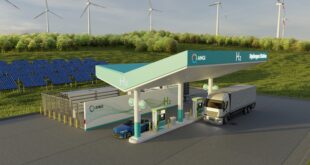February 15, 2012—According to EnergyTrend, the green energy division of TrendForce, benefitting from the rush orders in Q1, first-tier manufacturers managed to keep their capacity utility rate above 80% while second-tier manufacturers above 50%. Although manufacturers take optimistic attitude toward 1Q12, there are some factors affecting the solar industry development. First, system manufacturers’ installation progress has been delayed as snowy weather continues to grip Europe. Second, rumors of Energy Conversion Devices (ECD)’ bankruptcy have put solar industry development in doubt.

Source: EnergyTrend
As severe snow storms have descended on Europe for days, most solar markets, including Germany, are putting their system installation on hold. However, EnergyTrend research indicated that the harsh weather has not stopped system manufacturers from pulling inventory. They expressed that system vendor’s sales channels were spread mainly across the European markets, which allowed them to adjust modules supply orderly based on demand and to resume installation when weather is less severe in Germany.
However, it is worth paying attention to whether small or medium system manufacturers without sales channels are affected by the weather, with inherent inventory accumulation that brings financial is cutting subsidy in April. An estimate based on information from several sources puts the reduction at about 10% to 15%. EnergyTrend estimates that in order to prevent further loss on inventory valuation caused by the weather, orders will reach its peak by the end of February or early March.
On the other hand, ECD, Uni-Solar’s parent company, filed for bankruptcy, have raised concerns in the PV industry development. Uni-Solar focused on flexible thin-film, according to EnergyTrend’s survey, their target market remains the niche market segment, focused on the U.S. and European roof-tops. Since ECD has faced management problems for a while, the declaration of bankruptcy is just a matter of time. PV manufacturers indicated that this incident does not have a significant impact on the PV industry development. However, it is important to further follow-up on whether Uni-Solar can be sold successfully as well as the final buyer’s background.
As for this week’s spot prices, according to EnergyTrend’s research, lowest polysilicon price has increased to US$27/kg, while the average price rose to US$29.68/kg, a 1.23% increase. Si wafer price range remained stable, with the multi-Si wafer’s ASP rising to US$1.201/piece, a 1.01% increase. The mono-Si wafer’s ASP increased slightly to US$1.601/piece, an increase of 0.31%. EnergyTrend stated that the high-efficiency Si wafer products are now in shortage, which cannot be solved in the short run. In terms of general Si wafer supply, since Chinese manufacturers returned to work, the future market development is needed to be observed.
As for solar cells, this week’s average price still showed a slight uptrend with average price at US$0.52/Watt, a 0.58% increase. This week’s solar module price showed a slight decrease, with average price at US$0.871/Watt, an decrease of 0.8%, affected by general product price dropped by Chinese module makers. Furthermore, high-efficiency PV module price still remained at high level, stayed at US$0.9/Watt.
 Alternative Energy HQ solar power for homes, wind energy, and bio fuel issues
Alternative Energy HQ solar power for homes, wind energy, and bio fuel issues






